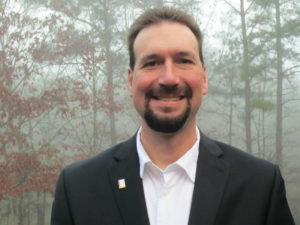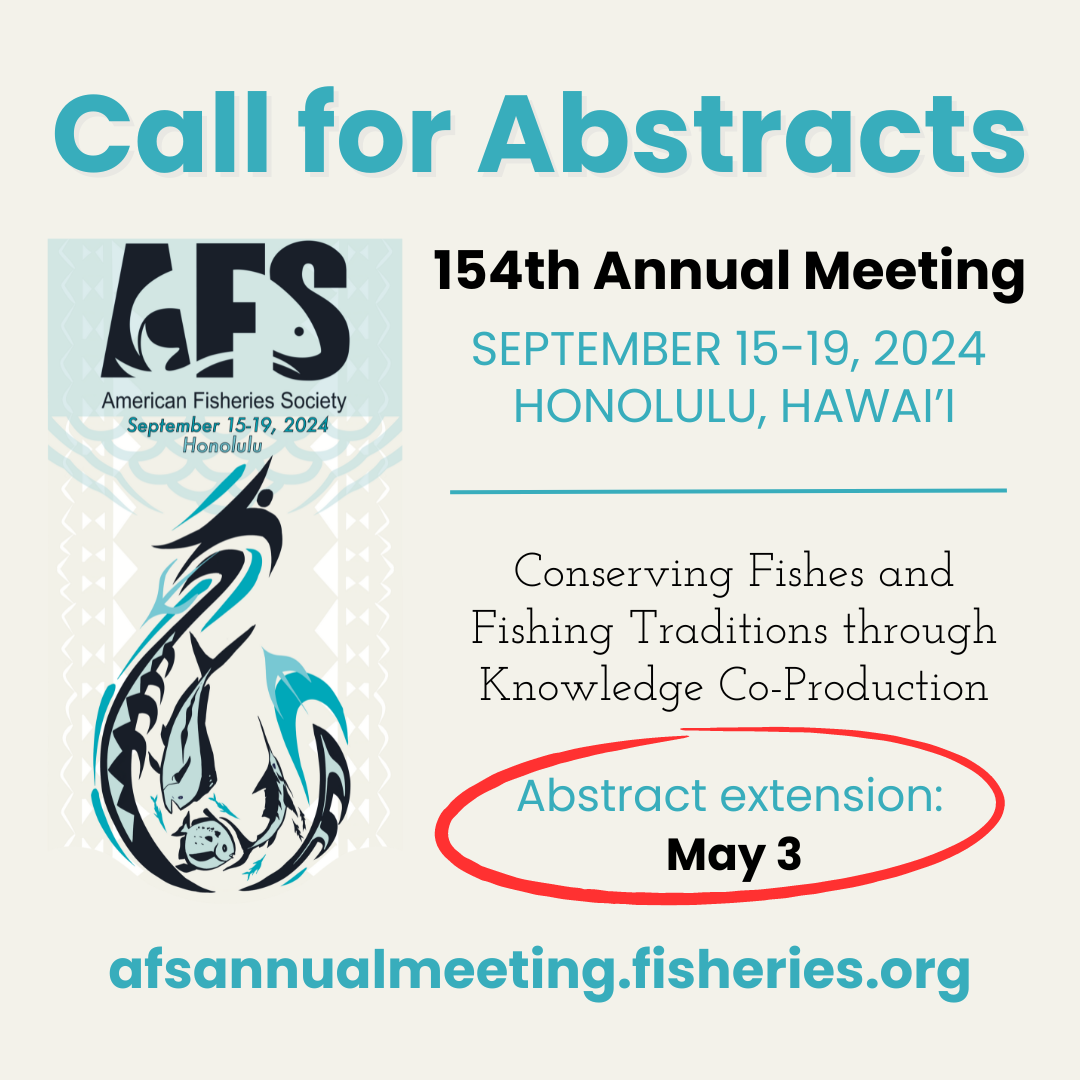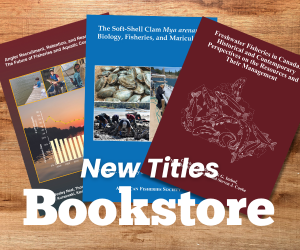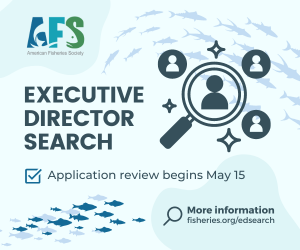Guest Column
Darren Miller | President, The Wildlife Society
 Similar to many wildlife biologists of my generation, I entered the field due to my love of the outdoors, experienced through hunting and fishing with my dad, older brother, and great uncle. In Kentucky in the late 1970s to the early 1980s when I was growing up, there were not many white‐tailed deer Odocoileus virginianus or eastern wild turkey Meleagris gallopavo silvestris in Kentucky. So, we rabbit Sylvilagus floridanus hunted over beagles (I still have a beagle pack), squirrel Sciurus spp. hunted, and fished for Smallmouth Bass Micropterus dolomieu, and other species, wading in streams near my hometown of Louisville. I can vividly recall the sights, sounds, and smells of the first time I accompanied my dad on an early fall squirrel hunt and I bring this incredibly emotional memory to the forefront every fall when I get out in the squirrel woods in Mississippi; it often brings me nearly to tears. Likewise, the memories of slipping into a clear stream in late May and enticing hits from hungry bass while enjoying the serenity of a day in the water often come to mind, especially when fishing for Largemouth Bass M. salmoides or Bluegill Lepomis macrochirus on my own farm pond. Those early memories, and my continued pursuit of hunting and fishing across many landscapes, continue to be the cornerstone of my deep conviction on the importance of wild things and wild places, and the need for science to continue to secure the future of these invaluable natural resources.
Similar to many wildlife biologists of my generation, I entered the field due to my love of the outdoors, experienced through hunting and fishing with my dad, older brother, and great uncle. In Kentucky in the late 1970s to the early 1980s when I was growing up, there were not many white‐tailed deer Odocoileus virginianus or eastern wild turkey Meleagris gallopavo silvestris in Kentucky. So, we rabbit Sylvilagus floridanus hunted over beagles (I still have a beagle pack), squirrel Sciurus spp. hunted, and fished for Smallmouth Bass Micropterus dolomieu, and other species, wading in streams near my hometown of Louisville. I can vividly recall the sights, sounds, and smells of the first time I accompanied my dad on an early fall squirrel hunt and I bring this incredibly emotional memory to the forefront every fall when I get out in the squirrel woods in Mississippi; it often brings me nearly to tears. Likewise, the memories of slipping into a clear stream in late May and enticing hits from hungry bass while enjoying the serenity of a day in the water often come to mind, especially when fishing for Largemouth Bass M. salmoides or Bluegill Lepomis macrochirus on my own farm pond. Those early memories, and my continued pursuit of hunting and fishing across many landscapes, continue to be the cornerstone of my deep conviction on the importance of wild things and wild places, and the need for science to continue to secure the future of these invaluable natural resources.
Although a conservation message based largely on sharing generational experiences of hunting and fishing resonates with me and with many of my cohorts, it certainly does not resonate with everyone. As society continues to become more urbanized, the general public has become less and less connected to the natural world and to activities in the outdoors, particularly hunting and fishing. Reflective of this societal shift is also a change in many of the students we are recruiting into the profession—their connection to the natural world, although often profound, increasingly comes from different life experiences. Such students and young professionals will almost assuredly be exposed to the science behind wildlife and fisheries management and obtain a more comprehensive view of the concepts of sustainable use, and how these activities are still a critical aspect not only of natural resources conservation, but of our cultural heritage. I know something similar happened to me—I came into the field with a strong consumptive use perspective, but my views on issues and opportunities in natural resource management have certainly expanded beyond that core value during my educational and professional career. Of course, much of this expanded worldview has been, and continues to be, facilitated by my engagement in The Wildlife Society (TWS).
Given the societal shifts mentioned above, how do we communicate conservation messages to a society largely detached from the natural world and becoming more diverse, with a concomitant diversity of views on natural resource management? How do we find messages that resonate? This challenge goes beyond specific topics, such as sustainable use. Instead, perhaps a more profound aspect is our ability to continue to use proven, science‐based tools to further conservation and management. To continue to use these tools, we must maintain our “social license to operate.” This concept is rooted in societal acceptance of methods we use to manage our natural resources. If society does not support these tools and techniques, we will lose the ability to use them. In the wildlife world, we have already lost some of these tools in some locations—recreational trapping, black bear Ursus americanus hunting, and controlled hunts to reduce overpopulations of white‐tailed deer in populated areas are a few examples. Is prescribed fire next? What about trapping and removal of invasive animal and fish species? Use of herbicides to properly manage/control aquatic and terrestrial vegetation? The list is long with many tools being vulnerable. In many cases, this is simply due to a lack of understanding of the assumed environmental consequences of these methods along with the value and need for these tools.
I believe that to continue to be allowed to make and implement science‐based conservation decisions, we must be able to connect to the public by crafting messages that resonate with society—a “hook” if you will—and will facilitate thought, discussion, and hopefully acceptance of not only the importance of conservation, but continue to enable professional wildlife and fisheries biologists to practice their profession. Of course, these messages must also be delivered in a way that is accepted by society—social media and new communication tools will continue to challenge our ability to “compete” for attention in an information‐saturated world.
In the spirit of this need, AFS President Jesse Trushenski and I have decided to use the general concept of communicating conservation to society as the theme for the joint AFS/TWS meeting, to be held in Reno, Nevada September 29–October 3, 2019. We have devised two joint plenaries to further explore this general theme. The first plenary will be focused on communicating concepts of sustainable use, and how science‐based management, including use of our renewable fish and wildlife resources, are critical for continued conservation success. In recognition of the diversification of society, and their attitudes about wildlife and fisheries conservation, and the increased diversity of our own professions, the second plenary will focus on communicating conservation messages to under‐represented groups. Together, we are hopeful that these two plenaries, with the backdrop of this joint meeting, will spur discussion broadly within our profession on how we can communicate conservation messages to the public and ultimately influence positive decisions by voters and stakeholders in natural resource conservation.
Of course, I also strongly believe that the joint meeting is a unique opportunity to encourage collaboration among natural resource professionals before, during, and after the conference. Together, we can explore challenges, contemplate solutions, and celebrate conservation successes. Please help us make the joint meeting as productive, inspiring, and meaningful as possible. If there is anything I can do to help facilitate this, please do not hesitate to contact me. I look forward to seeing many of you in Reno!


 Similar to many wildlife biologists of my generation, I entered the field due to my love of the outdoors, experienced through hunting and fishing with my dad, older brother, and great uncle. In Kentucky in the late 1970s to the early 1980s when I was growing up, there were not many white‐tailed deer Odocoileus virginianus or eastern wild turkey Meleagris gallopavo silvestris in Kentucky. So, we rabbit Sylvilagus floridanus hunted over beagles (I still have a beagle pack), squirrel Sciurus spp. hunted, and fished for Smallmouth Bass Micropterus dolomieu, and other species, wading in streams near my hometown of Louisville. I can vividly recall the sights, sounds, and smells of the first time I accompanied my dad on an early fall squirrel hunt and I bring this incredibly emotional memory to the forefront every fall when I get out in the squirrel woods in Mississippi; it often brings me nearly to tears. Likewise, the memories of slipping into a clear stream in late May and enticing hits from hungry bass while enjoying the serenity of a day in the water often come to mind, especially when fishing for Largemouth Bass M. salmoides or Bluegill Lepomis macrochirus on my own farm pond. Those early memories, and my continued pursuit of hunting and fishing across many landscapes, continue to be the cornerstone of my deep conviction on the importance of wild things and wild places, and the need for science to continue to secure the future of these invaluable natural resources.
Similar to many wildlife biologists of my generation, I entered the field due to my love of the outdoors, experienced through hunting and fishing with my dad, older brother, and great uncle. In Kentucky in the late 1970s to the early 1980s when I was growing up, there were not many white‐tailed deer Odocoileus virginianus or eastern wild turkey Meleagris gallopavo silvestris in Kentucky. So, we rabbit Sylvilagus floridanus hunted over beagles (I still have a beagle pack), squirrel Sciurus spp. hunted, and fished for Smallmouth Bass Micropterus dolomieu, and other species, wading in streams near my hometown of Louisville. I can vividly recall the sights, sounds, and smells of the first time I accompanied my dad on an early fall squirrel hunt and I bring this incredibly emotional memory to the forefront every fall when I get out in the squirrel woods in Mississippi; it often brings me nearly to tears. Likewise, the memories of slipping into a clear stream in late May and enticing hits from hungry bass while enjoying the serenity of a day in the water often come to mind, especially when fishing for Largemouth Bass M. salmoides or Bluegill Lepomis macrochirus on my own farm pond. Those early memories, and my continued pursuit of hunting and fishing across many landscapes, continue to be the cornerstone of my deep conviction on the importance of wild things and wild places, and the need for science to continue to secure the future of these invaluable natural resources.


